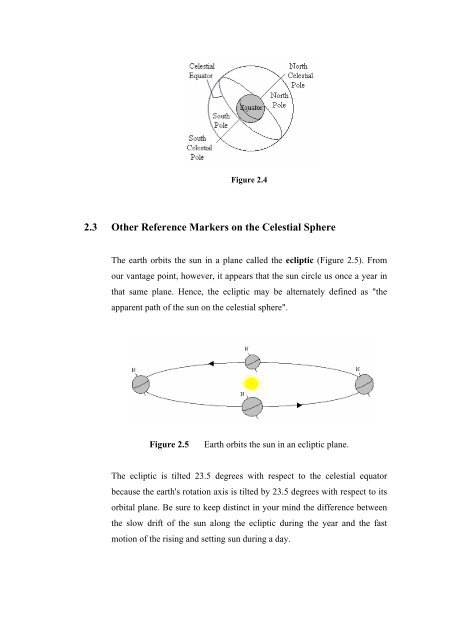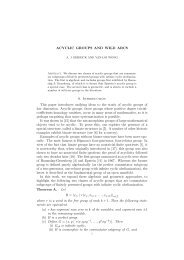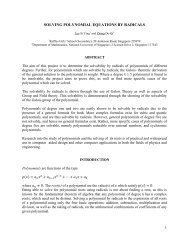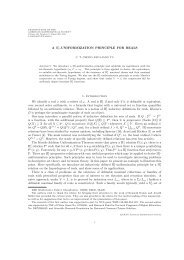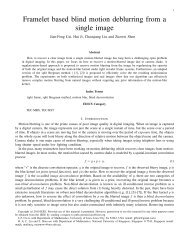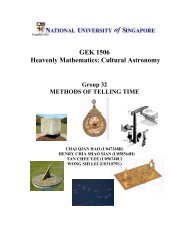The Mathematics of the Longitude - Department of Mathematics
The Mathematics of the Longitude - Department of Mathematics
The Mathematics of the Longitude - Department of Mathematics
You also want an ePaper? Increase the reach of your titles
YUMPU automatically turns print PDFs into web optimized ePapers that Google loves.
Figure 2.4<br />
2.3 O<strong>the</strong>r Reference Markers on <strong>the</strong> Celestial Sphere<br />
<strong>The</strong> earth orbits <strong>the</strong> sun in a plane called <strong>the</strong> ecliptic (Figure 2.5). From<br />
our vantage point, however, it appears that <strong>the</strong> sun circle us once a year in<br />
that same plane. Hence, <strong>the</strong> ecliptic may be alternately defined as "<strong>the</strong><br />
apparent path <strong>of</strong> <strong>the</strong> sun on <strong>the</strong> celestial sphere".<br />
Figure 2.5 Earth orbits <strong>the</strong> sun in an ecliptic plane.<br />
<strong>The</strong> ecliptic is tilted 23.5 degrees with respect to <strong>the</strong> celestial equator<br />
because <strong>the</strong> earth's rotation axis is tilted by 23.5 degrees with respect to its<br />
orbital plane. Be sure to keep distinct in your mind <strong>the</strong> difference between<br />
<strong>the</strong> slow drift <strong>of</strong> <strong>the</strong> sun along <strong>the</strong> ecliptic during <strong>the</strong> year and <strong>the</strong> fast<br />
motion <strong>of</strong> <strong>the</strong> rising and setting sun during a day.


